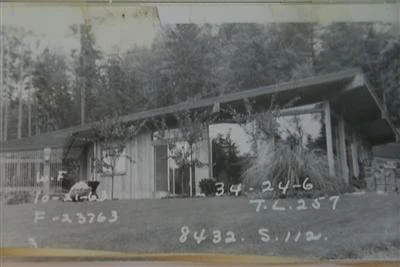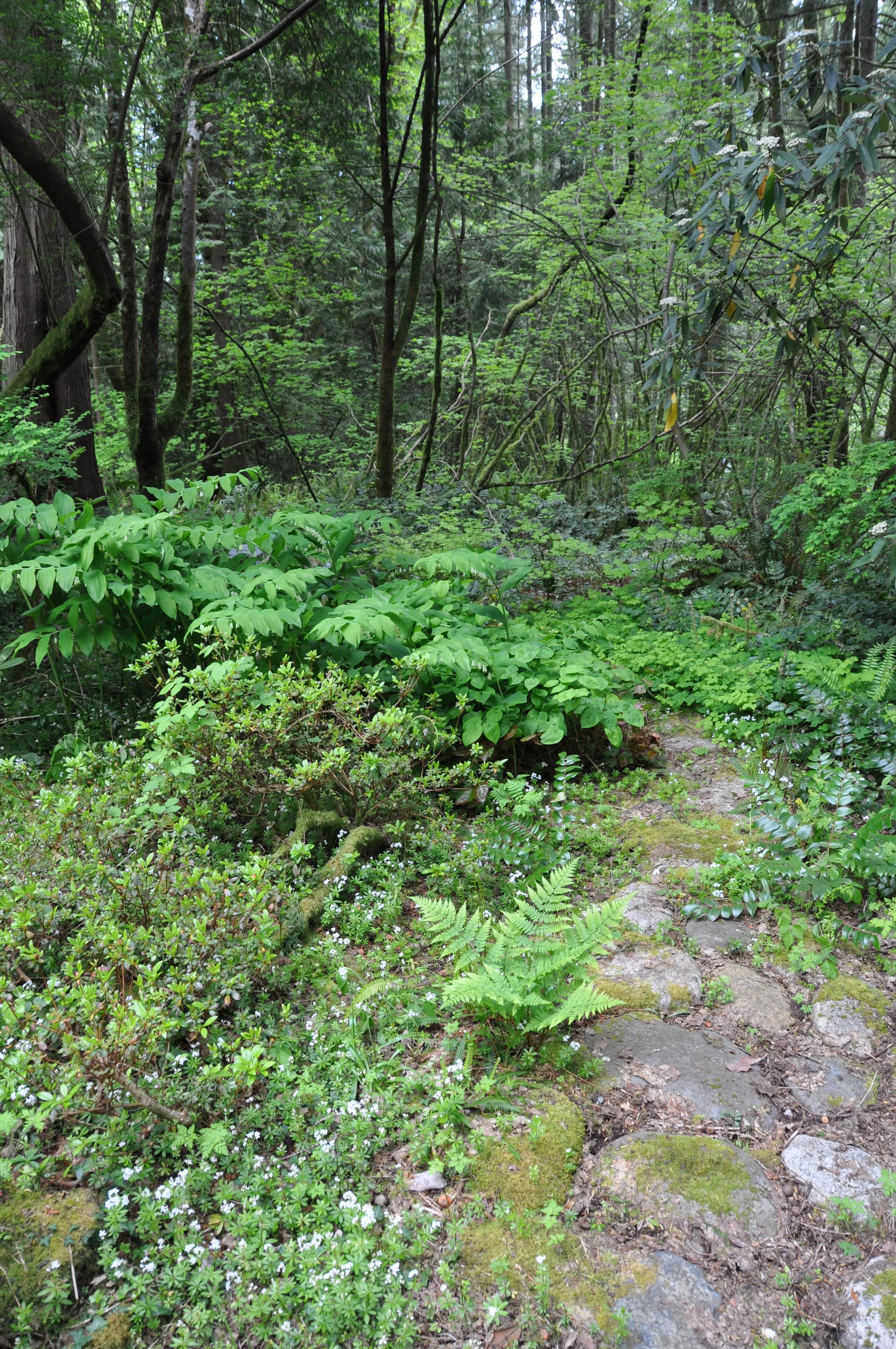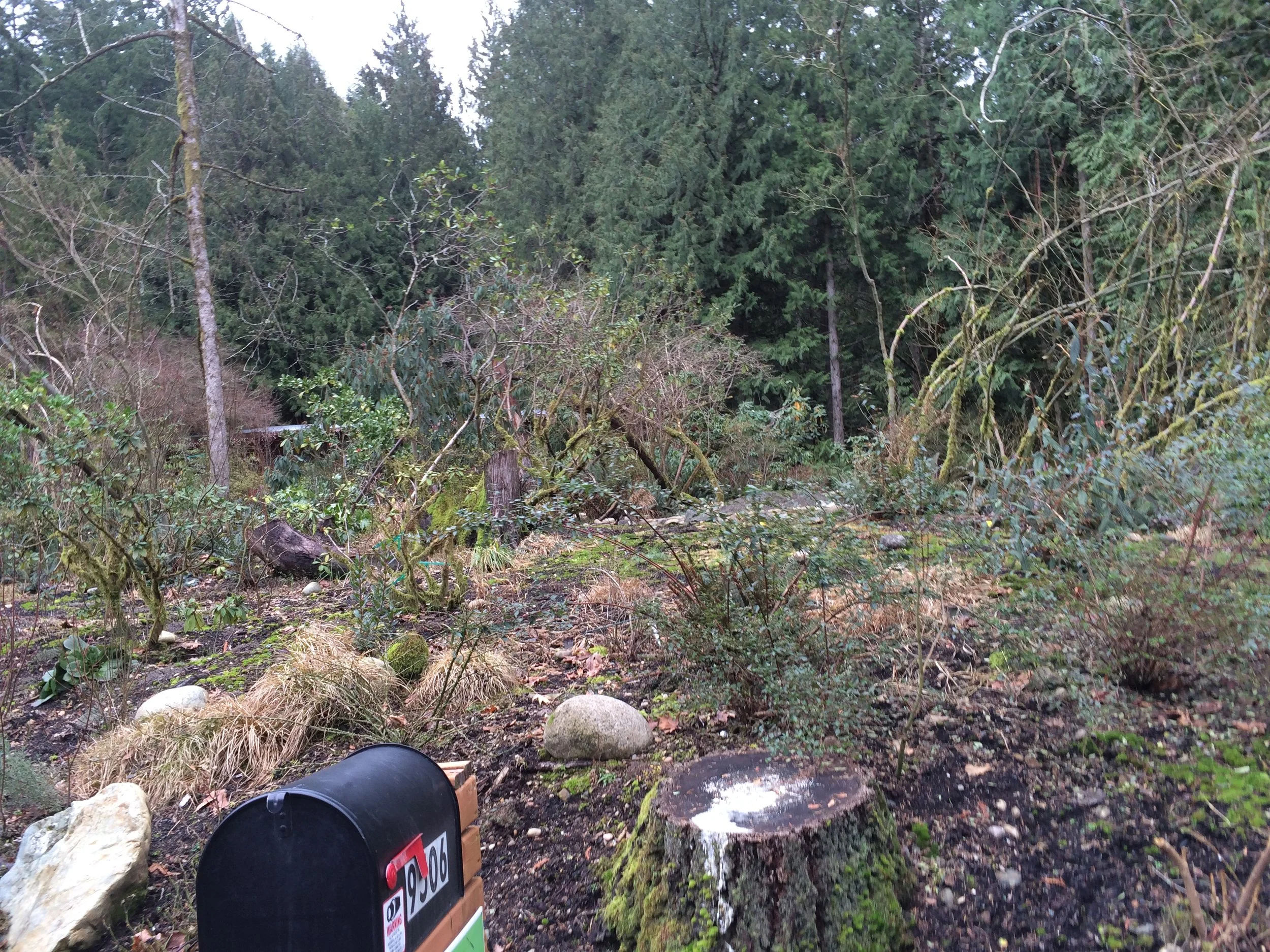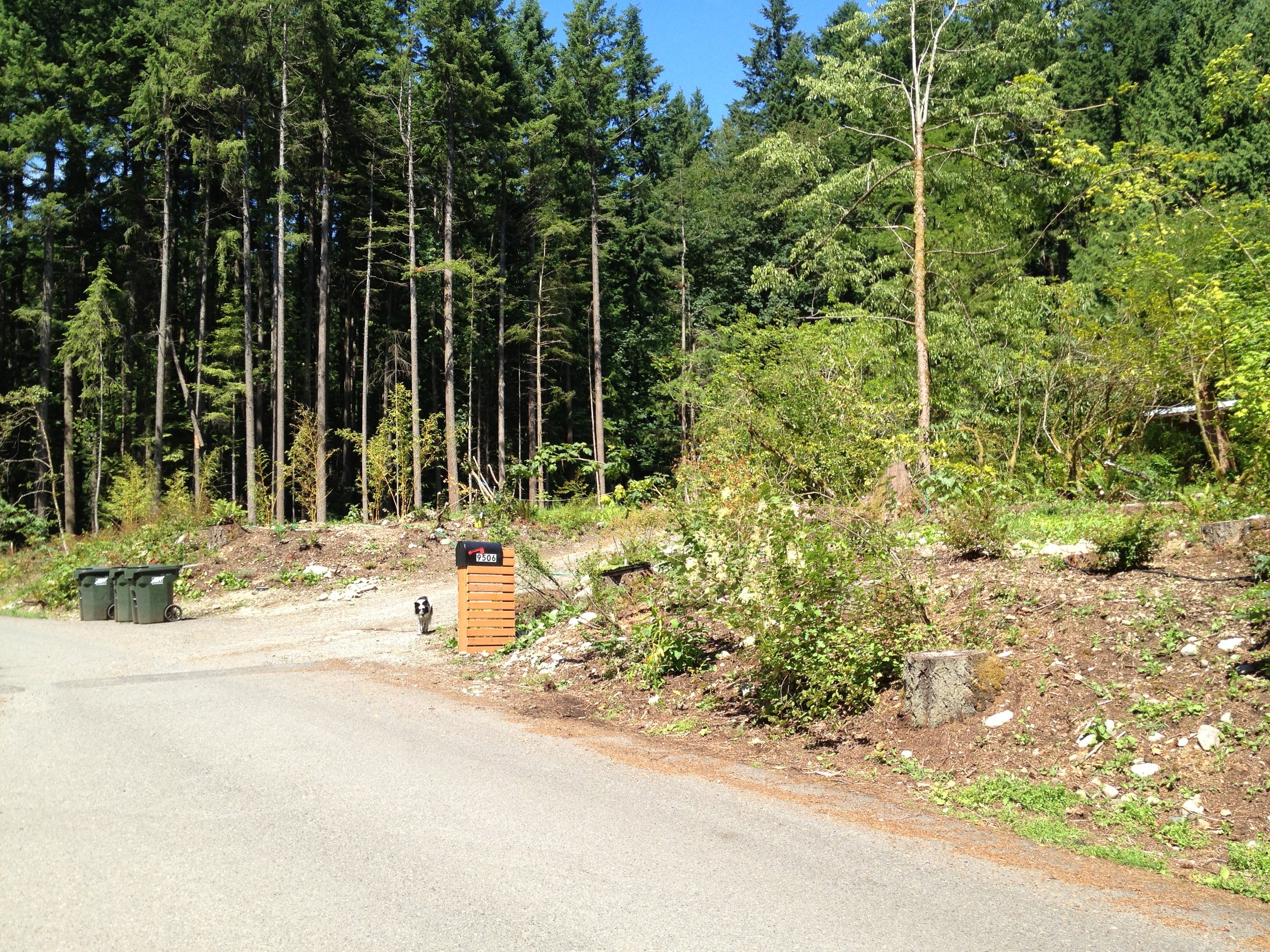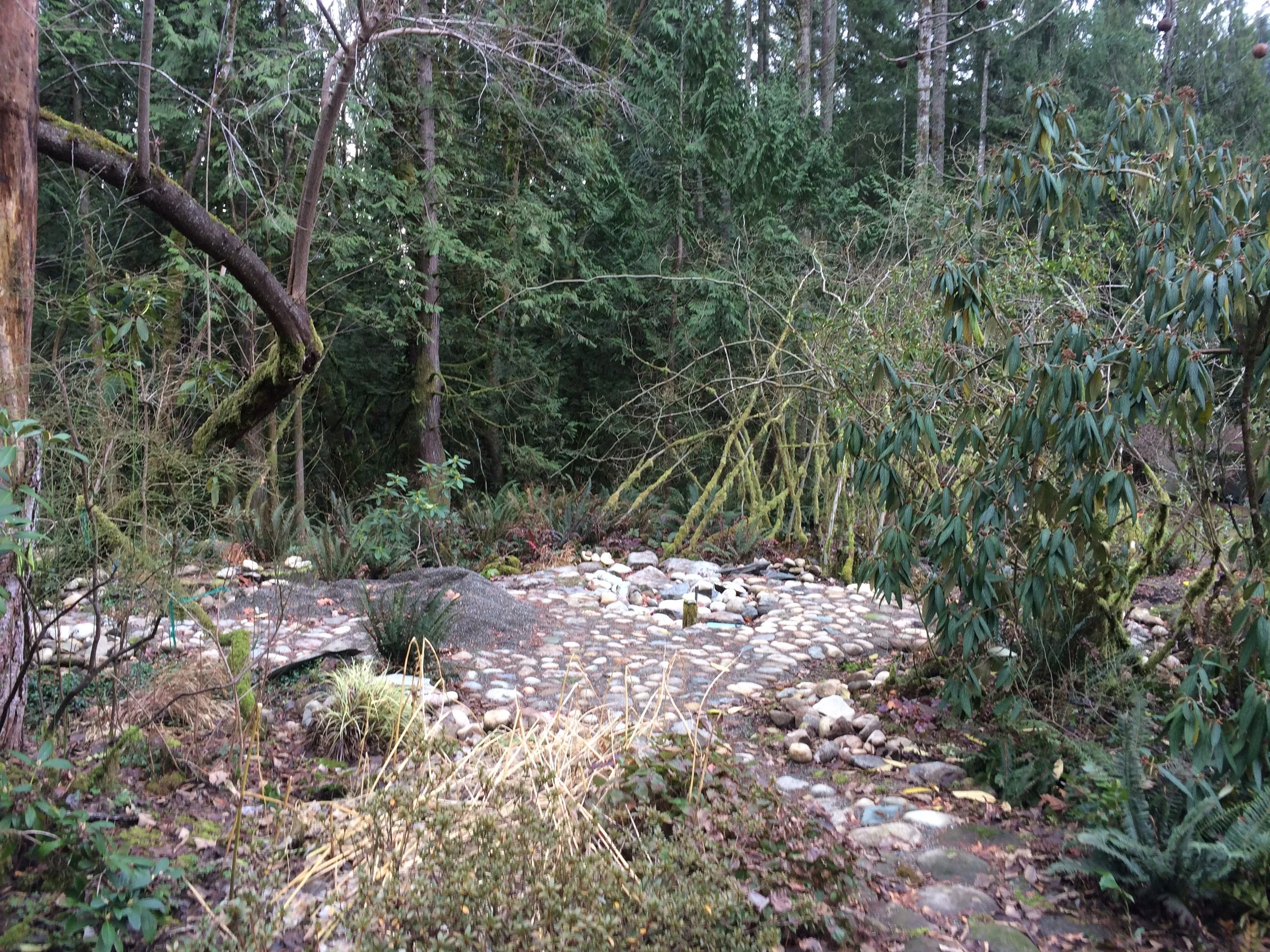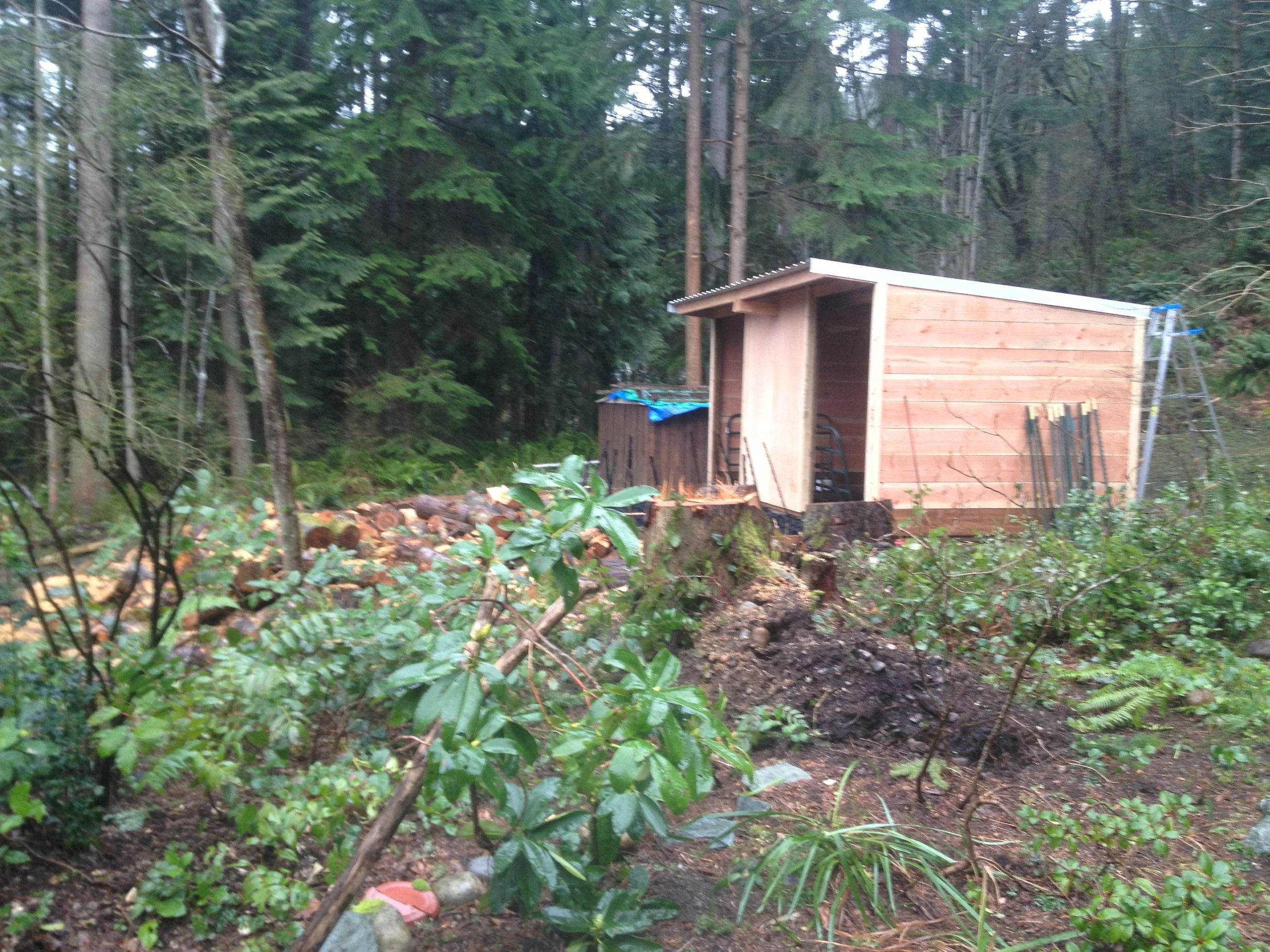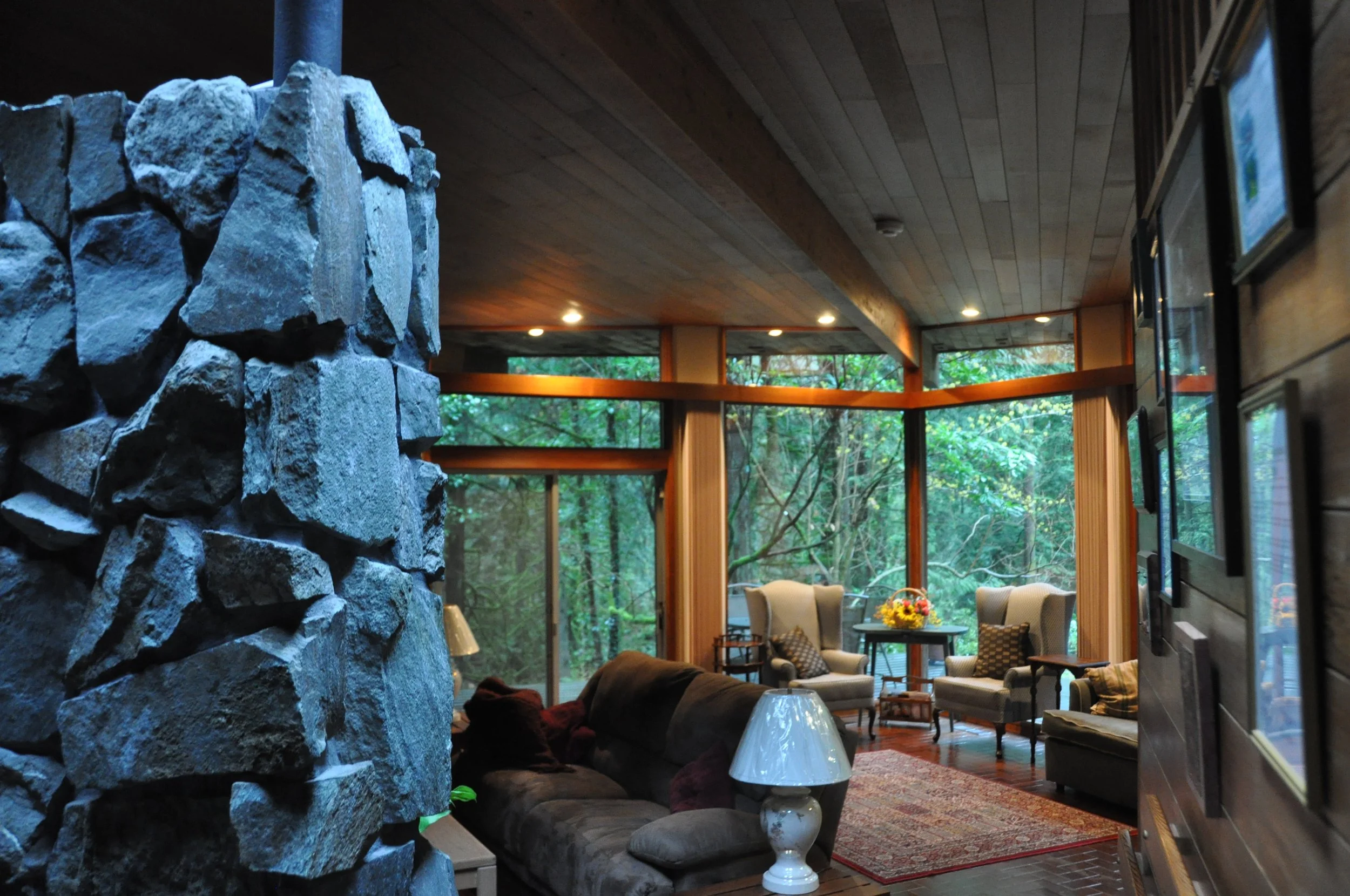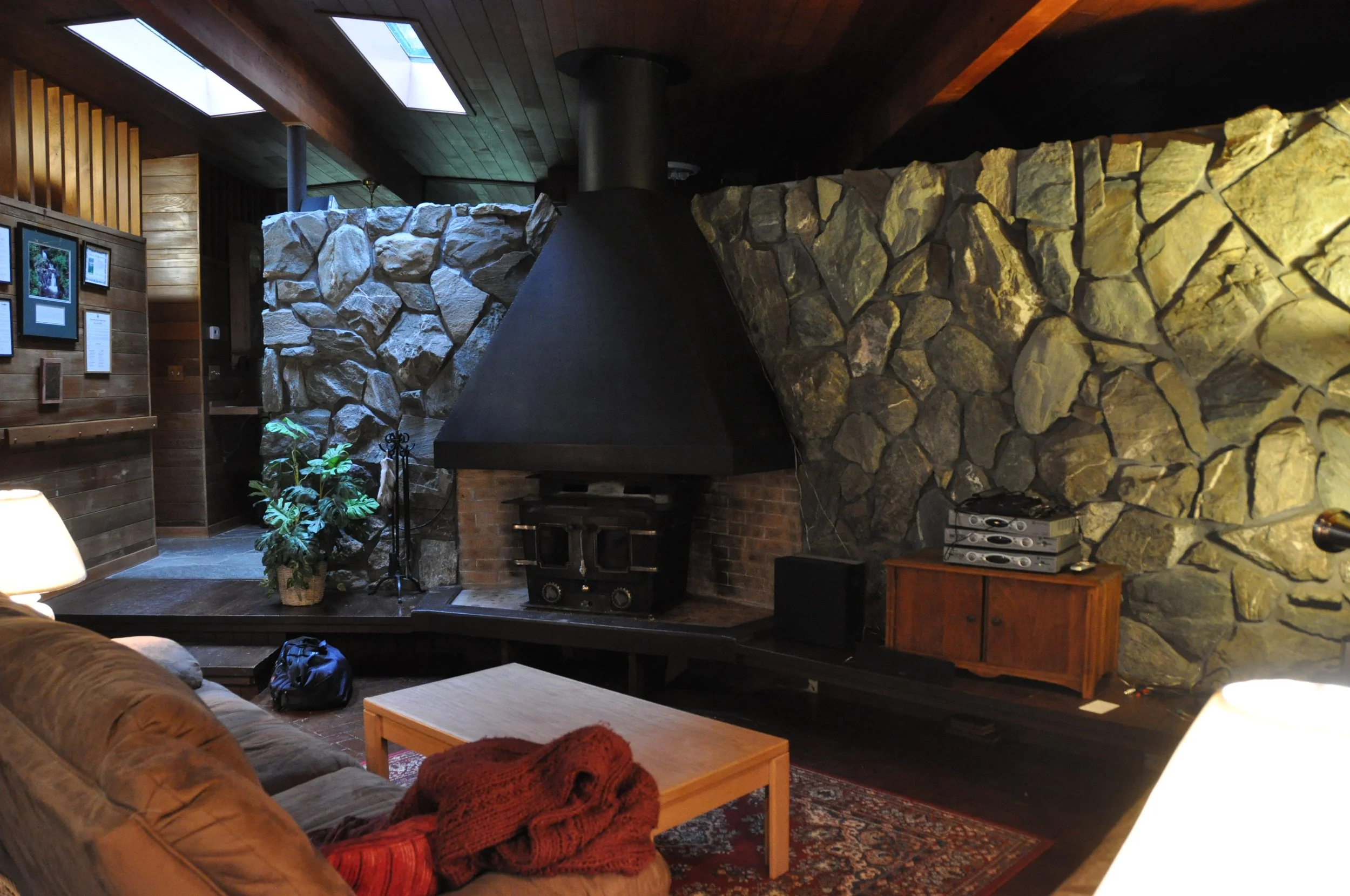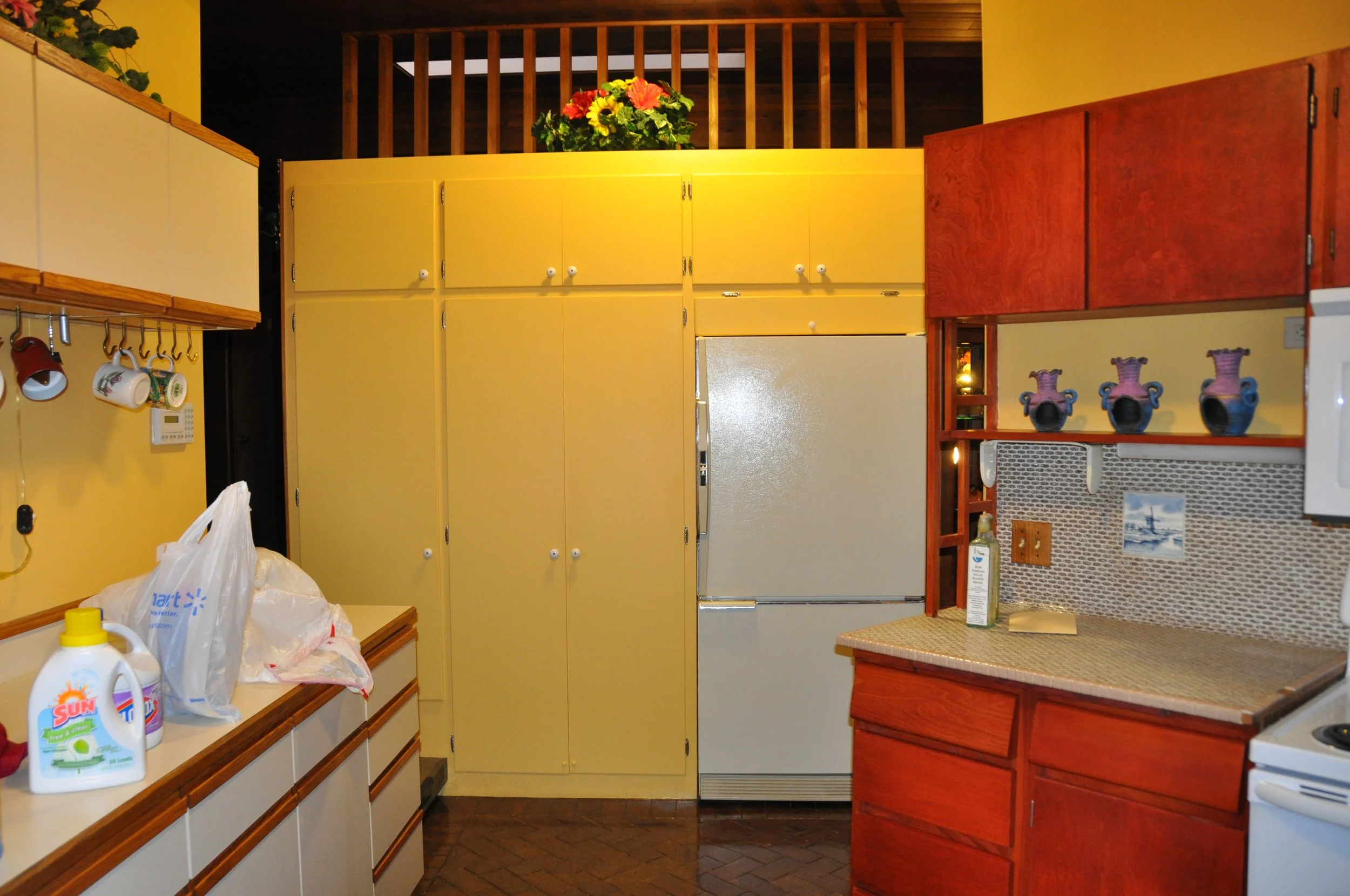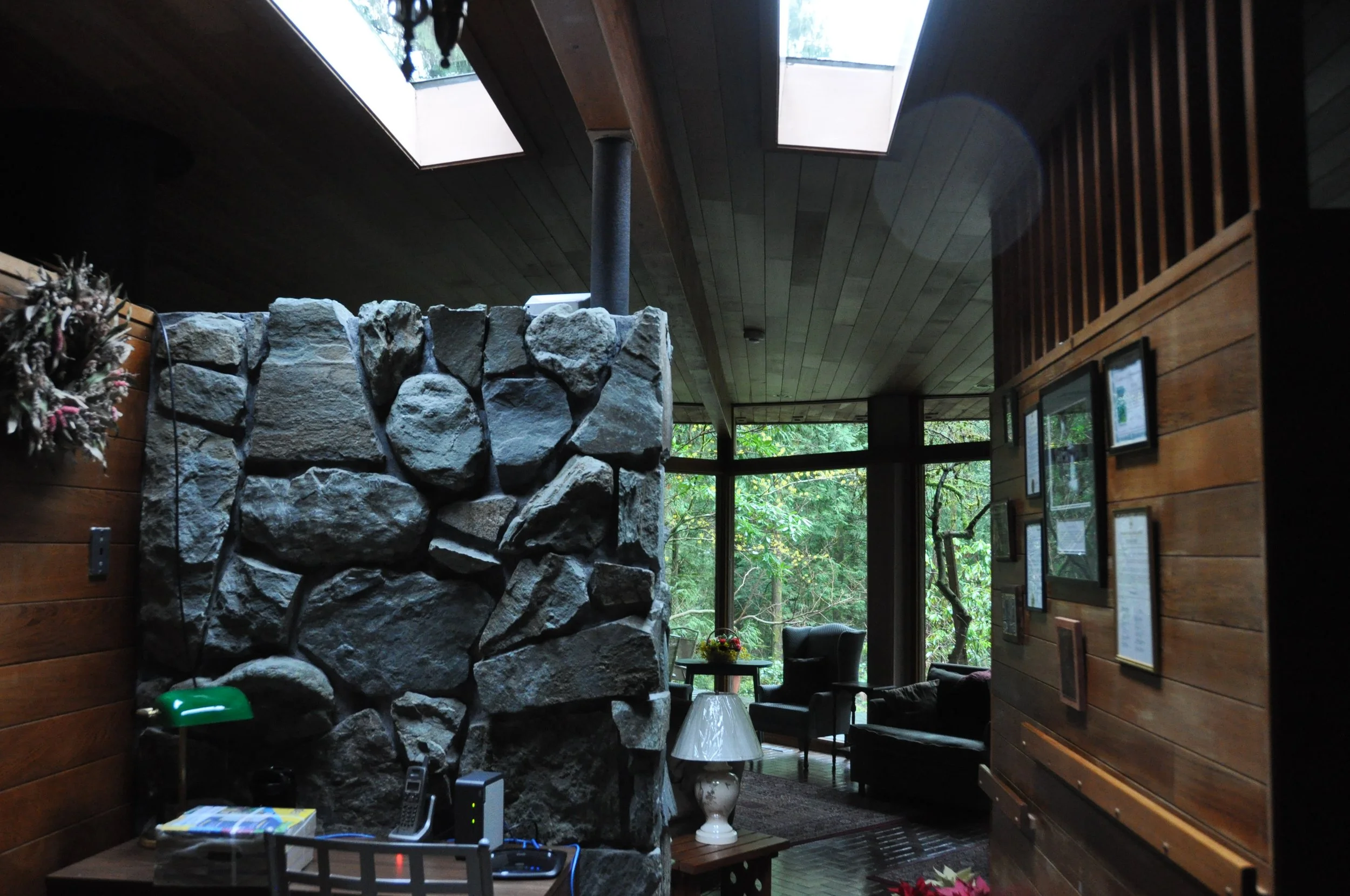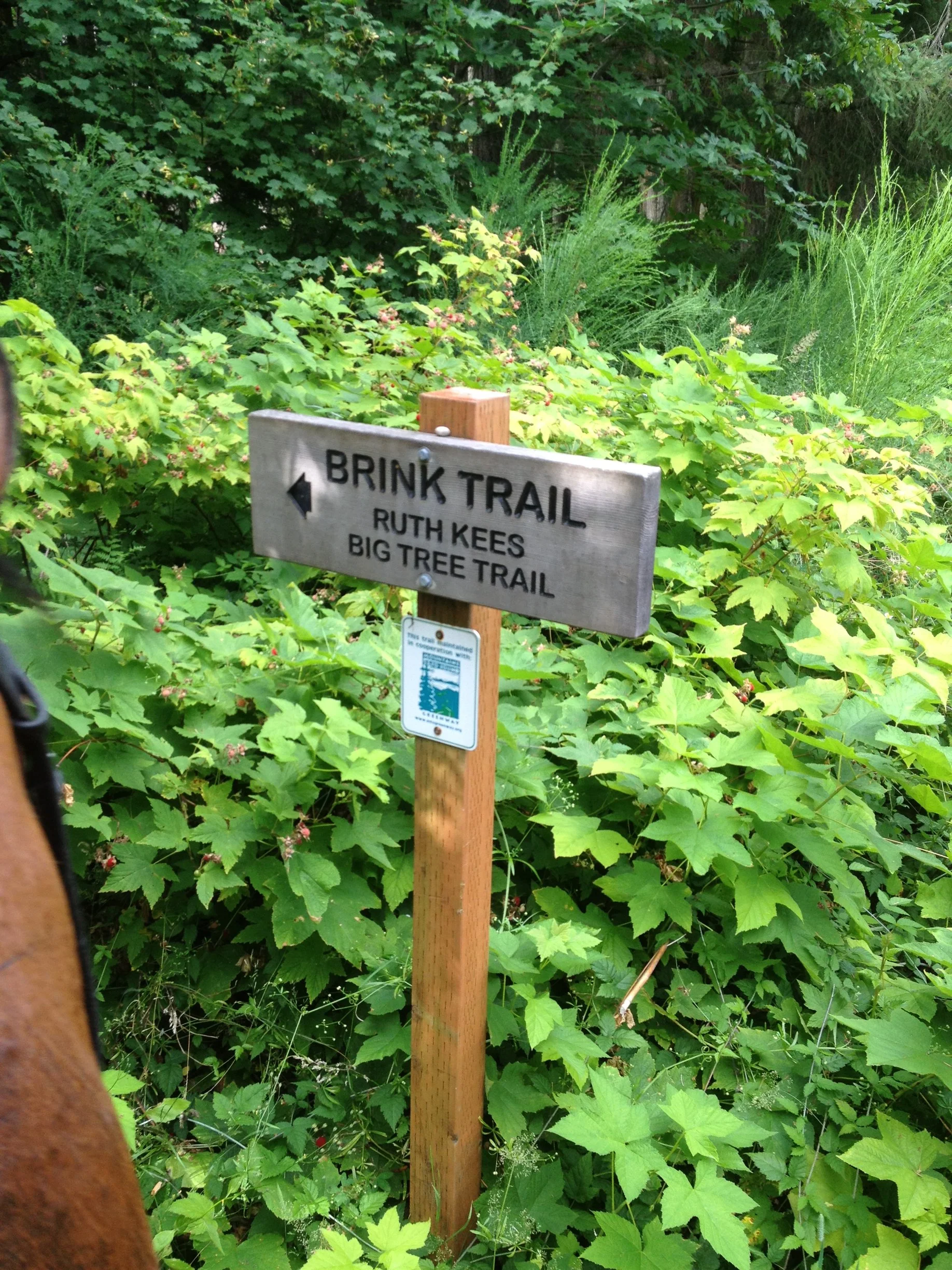
THE STORY
Kees House and Owens Gardens
In 2011, I had the immense fortune to acquire the Kees house in Issaquah. When I purchased it, I knew it had integrity and soul, but it took years of unwrapping and restoring its layers of beauty and history to realize its full character.
In the 1950’s, the Pacific Northwest became known for a local architecture style known as Northwest Regionalism, (or Northwest Modern). It grew from a mix of the Bauhaus and Frank Lloyd Wright esthetic of the era, and featured locally sourced organic materials such as lightly stained clear cedar, fir and stone, meticulously crafted into light and airy frames around large expanses of glass. The goal was to let natural light and the outdoors flow into inside spaces. Structural elements like joinery and beams were beautifully wrought and exposed to view, and low roofs had dramatic overhangs.
There are a few remaining examples of it scattered throughout the area, and they are true gems in an era of mass produced, nearly identical houses made of cheap synthetic materials.
Kees house in Issaquah is one of these gems and resonates with the history of the Pacific Northwest both in the structure and the legacy of the land. Ruth Kees designed the house and started building with her husband Dan in 1957. They worked for 6 years to create their dream home, and ended up with a masterpiece. It is modeled after the Frank Lloyd Wright hexagonal Usonian design, so the rooms have 60 and 120 degree angles which flow beautifully. There is floor to ceiling glass looking onto a lush ravine with a creek and stunning extensive gardens. Walls of hand harvested blue stone shot through with crystal are continuous from the interior to the exterior, and hold the heat created by a central wood stove. The floor is of locally milled, 3 inch thick end block fir, and the walls and ceilings are clear heartwood cedar.
Ruth was an extraordinary woman – she and her sister were pioneering women pilots, and owned and operated their own airplane commercially in the 40’s. Ruth got her design expertise at the Chicago Institute of Art at a time when a university degree for a Midwest farm girl was a real accomplishment. In the Northwest, she became a famous environmentalist who worked with Harvey Manning to preserve the Issaquah Alps. She has awards, trails, and trees named after her locally. Her specialty was watershed management, and she and her husband Dan purchased their 20 acres on the edge of Issaquah in part because they saw it as a keystone in the Sammamish watershed. Kees Creek runs through the center of it, with small waterfalls and trout. Ruth was a passionate plant collector, a member of the Rhododendron Society and in attendance at all the specialty plant sales. She loved the new hybrids being developed in the era, as well as species and native plants, Her color palette and composition were exquisite. Of their original 20 acres, 15 surrounding the core have been designated to the Washington State Department of Natural Resources through an agreement with Cascade Land Conservancy, ensuring the land's preservation for future generations and the privacy of a wilderness in the suburbs. Private trails connect to the Tiger Mountain biking and hiking network.
When I purchased the house several years after Ruth passed away, it was essentially abandoned and up for foreclosure. The garden was overrun with vinca and blackberries, there were half dead trees overshadowing the house, the forest had grown up so much the garden plants could barely extend a leaf into the sunlight. The cedar walls needed sanding and oiling, the end block floor had been painted over, and the enormous windows were foggy. The exterior needed careful brushing and sealing with marine oils, and the giant glulams restored with boat building materials. Years of trash buildup from picnicking bears was removed from the forest.
Sunlight and care revived the walls rich color and silky texture, new clear windows framed newly cleared lines of sight to Squak Mountain and Kees Creek. Amazing plants rose up everywhere from ragged snags and roots hidden under soil still rich with the nutrients and structure that Ruth and Dan had cultivated for decades.
The result was spiritual in beauty, and so inspirational I dedicated the next 13 years to curating it as a sanctuary and work of art. I tripled the plant collection, adding many rare and subtropical species. I expanded the stone terracing with rocks from the property and even locally made bricks. , created garden rooms, and framed views from each section of the property to the others. I brewed compost tea and released beneficial insects every summer. I tarped the old weed pile for 8 years then made a woodland garden of giant ferns, rhodies, and flowering ginger cascading down towards the creek. I identified and labeled the older plants, and tried to replace them with the same species to preserve Ruths palette when they passed away from age.
Reflective and white materials were added to the interior to lighten the house, and solid doors and walls were replaced with more glass ones that opened wide into the garden space and terraces. Old plywood cabinets were replaced with efficient modern storage.The bank behind the house was reinforced with walls at specific levels to create a view from inside the house to the creek, and stone terraces, sofas, fire pits and string lights invite gatherings. Late afternoon sun shafts cross the terraces and ravine to light an ornate pergola and bridge by the water.
Visitors always expressed their awe and sense of peace on entering the spaces and garden tours, weddings, video productions, and photographers began to come. It generously accomodated long tables, catering, and parties of up to 30 people. It has been a touchstone gathering place for my extended family. One of the best compliments I’ve ever received is ‘this is the only place my son is so immersed he completely abandons his phone!’
Recently, I acquired the neighboring 5 acres downstream on Kees Creek, and have a whole new project restoring a wetland ecosystem ravaged by blackberries and a rundown house from 1900. The obra de arte of Kees House and Owens Gardens is at a stopping point for me - it is ready for its next life with a new curator – someone to continue its creative growth or who is simply ready for a healing sanctuary of incredible beauty.
